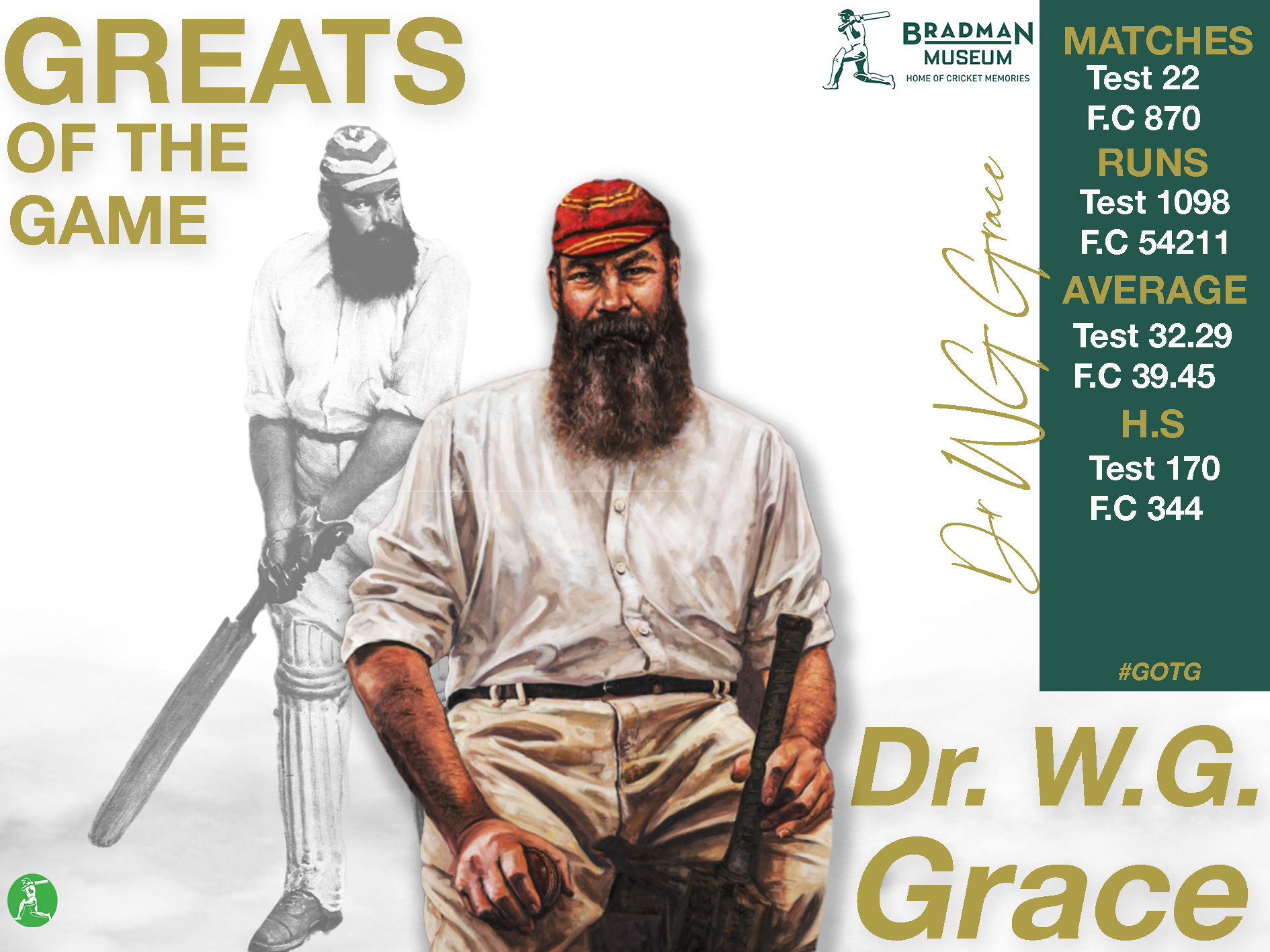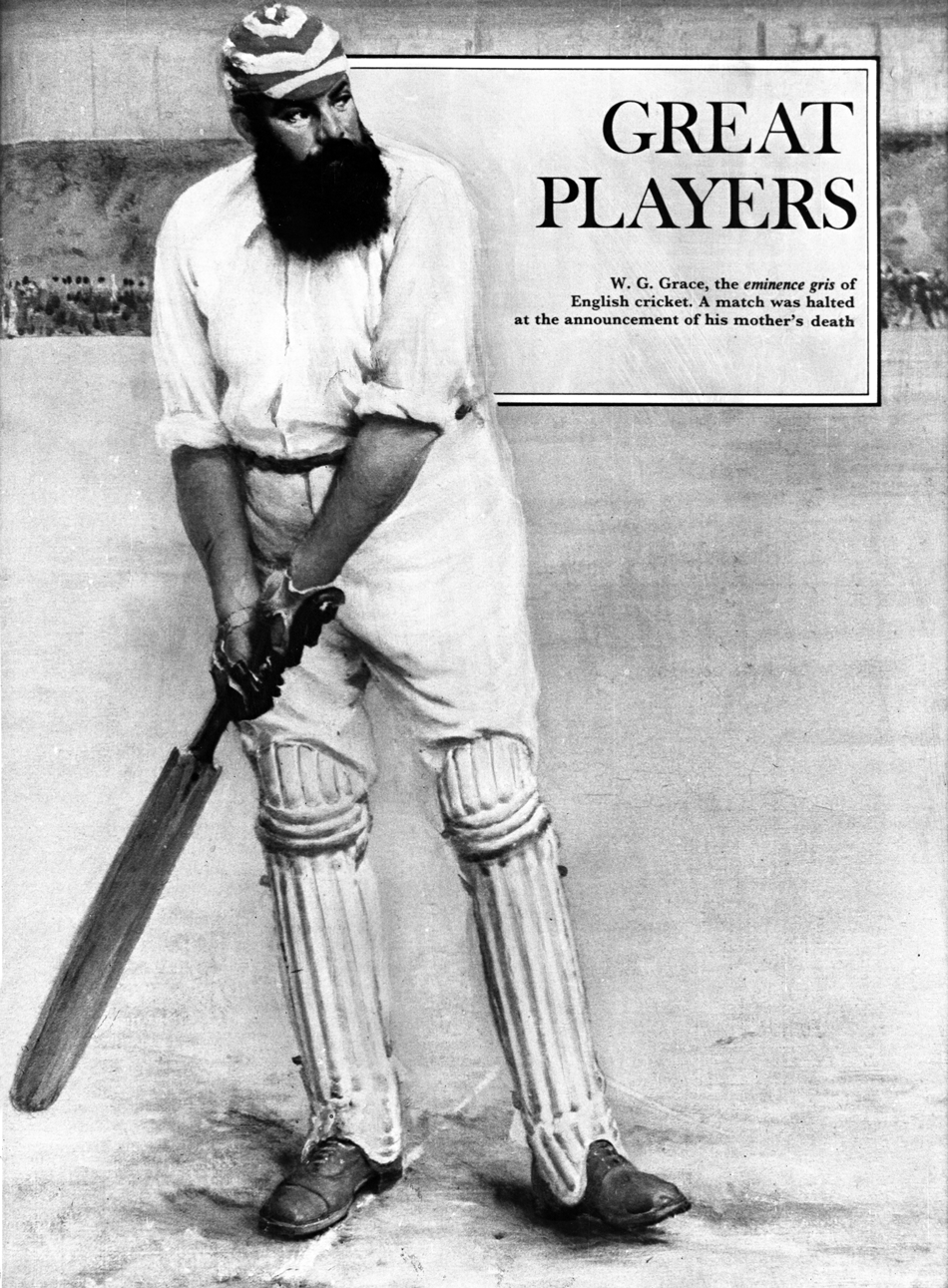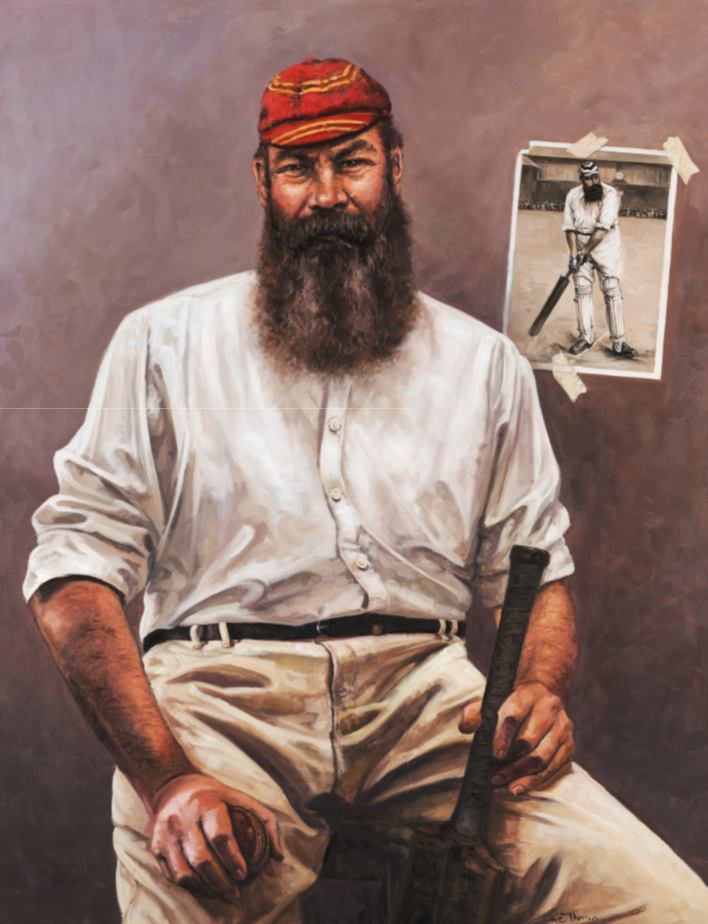WG Grace
England
Batter
D.O.B: 18/07/1848
International Career: 1880 – 1899

A stunning First Class record over almost 50 years, WG Grace is GOTG #12
The Doctor, The Champion, The Grand Old Man. Rarely is an individual – across any discipline – as instantly recognisable as W.G Grace is in cricketing circles. More than 100 years after his death, he remains cricket’s foremost character; both for his statistical brilliance, but significantly for his force of personality and the way in which he steered cricket from a 19th-century game, to a worldwide phenomenon.
Fittingly for a man who broke new ground in the game for the duration of his career, Grace predated Test cricket itself; born in 1848 – nearly 30 years before the first Test between England and Australia. Born, as Grace himself put it “in the atmosphere of cricket,” the game is indelibly linked with his family history. Both of his brothers represented England, and Geoffrey Moorhouse highlights the primacy of cricket in the family, observing Grace “came from a clan that was dotty about a great game and dutiful about the general practice of medicine, but there was no doubt in its collective mind which came first at all times and places.”
As he came to play cricket as a junior, Grace was imbued with a supreme confidence and a willingness to cheekily stretch the rules to his own advantage. That, along with his naturally towering presence, made him a uniquely intimidating prospect for opponents and one who, in the words of Jarrod Kimber, “was a global athlete before sport was global and before sportsmen were famous.”

An innovative style, Grace looms large over cricket, even today. (Bradman Archives)
Though he was a heavy-set gentleman, one Moorhouse describes as a “pot-bellied genius, who in middle age was far too heavy for any horse to bear,” Grace was able to develop a technique that worked around his lack of agility at the crease. In fact, he came to revolutionise batting technique for good. Jon Hotten describes how he would combat the “shooter” by playing back to shorter deliveries and coming forward to the full ones. Also the first batter who would play at the “rearing delivery” rather than simply avoiding it, Grace opened up a range of scoring opportunities. Such was the deviation from the norm that Hotten contends, “from his imagination he summoned the game we know today.”
Needless to say, it worked. The statistics of his career enough to demand our attention more than a century hence. The first player to crack 100 centuries, the first to score a triple century and the first to a thousand runs in a season, Grace batted with a brutish power. Indeed, the man himself quipped, “if you make up your mind to hit; hit hard. No half-and-half style as a rule will pay.” Across 44 seasons at First Class level, Grace amassed an astonishing 54,000 runs – remarkable for a man who was never categorised as a professional (though his financial gleaning from the game might suggest otherwise).
Unequivocally, as David Gower suggests, “the most successful batsman of his era by quite some distance,” there was an abounding sense of awe around the man. In 1871, he scored 10 of the 17 First Class centuries across England for the summer, before, in August of 1876, he thumped 839 runs in three innings across eight days. His genius not lost on opponents, the great Nottinghamshire bowler, Jem Shaw shared how it felt to bowl at Grace, simply recalling, “I puts the ball where I likes and he puts the ball where he likes.”

WG Grace portrait by Dave Thomas on display in the Bradman Museum Greats of the Game Gallery (Bradman Museum)
To go with his stunning exploits with the willow, Grace was also more than handy with the ball. Claiming 2,800 First Class wickets at better than 18 runs apiece, his all-round genius was astonishing. Consequently, Henry Blofeld describes him as “the great phenomenon of English cricket.”
Far from a faultless genius, Grace was instead full of contradictions. Prepared to act in self-interest – he would replace the bails and continue to bat after being dismissed, or refuse to tour if the price, as he deemed, was not right. For all of his foibles, it is ultimately more important to consider his extraordinary achievements; his elevation and revolutionising of the game along with a tireless dedication to it, that saw him play his final Test at the age of 50.
Perhaps the words that appear on the WG Grace Memorial Gates at Lord’s say it best:
“The Great Cricketer. In the end, his greatness was simple; he created modern cricket by his own example and force of personality”
Join the cricket network to promote your business and expertise. Make it easy for people to search and find the people and services they need through people they know and trust.
Join the network







